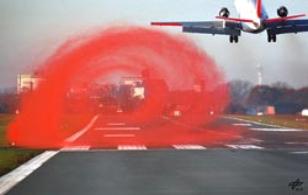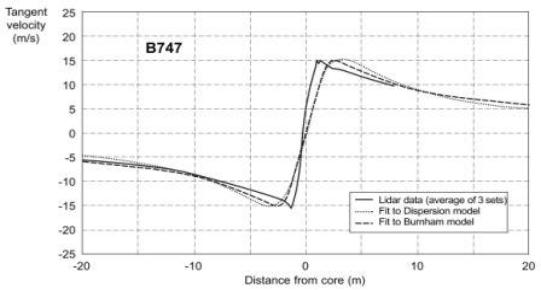Wake Vortices
Wake vortices are generated by the lifting surfaces of all aircraft. Typically, the vortices that are shed by the wing along its span eventually roll-up to form two counter-rotating vortices of swirling air. These vortices can then exhibit different behaviour that is a complex function of the atmospheric conditions
 |
Flow Visualization of a Wake Vortex (Courtesy DLR) |
The circulation strength of the vortices is directly linked to the lift generated by the wing and is related to the wake generating aircraft’s weight. Once generated, the wing-tip vortices can interact with each other, the atmosphere, and, if low enough, have a complex interaction with the ground. Extensive research has been conducted in trying to understand these phenomena using a variety of methods including LIDAR and acoustic measurements as well as numerical methods to model the vortices. These methods try to capture the characteristic behaviour of vortices such as the self-induced sink-rate, their decay, and how they are ‘transported’ by the prevailing winds. Typically, wake vortices descend at around 200-500 ft/min, and in extreme cases, can last for up to 4 minutes at near full strength in the right atmospheric conditions. It should be highlighted that wake vortices are sensitive to the atmospheric conditions. For example, strong or turbulent winds or strong density stratification, caused by temperature gradients, are known to accelerate the decay and dispersion of wake vortices.
 |
Burnham model velocity distribution of a Boeing 747 Wake Vortex |